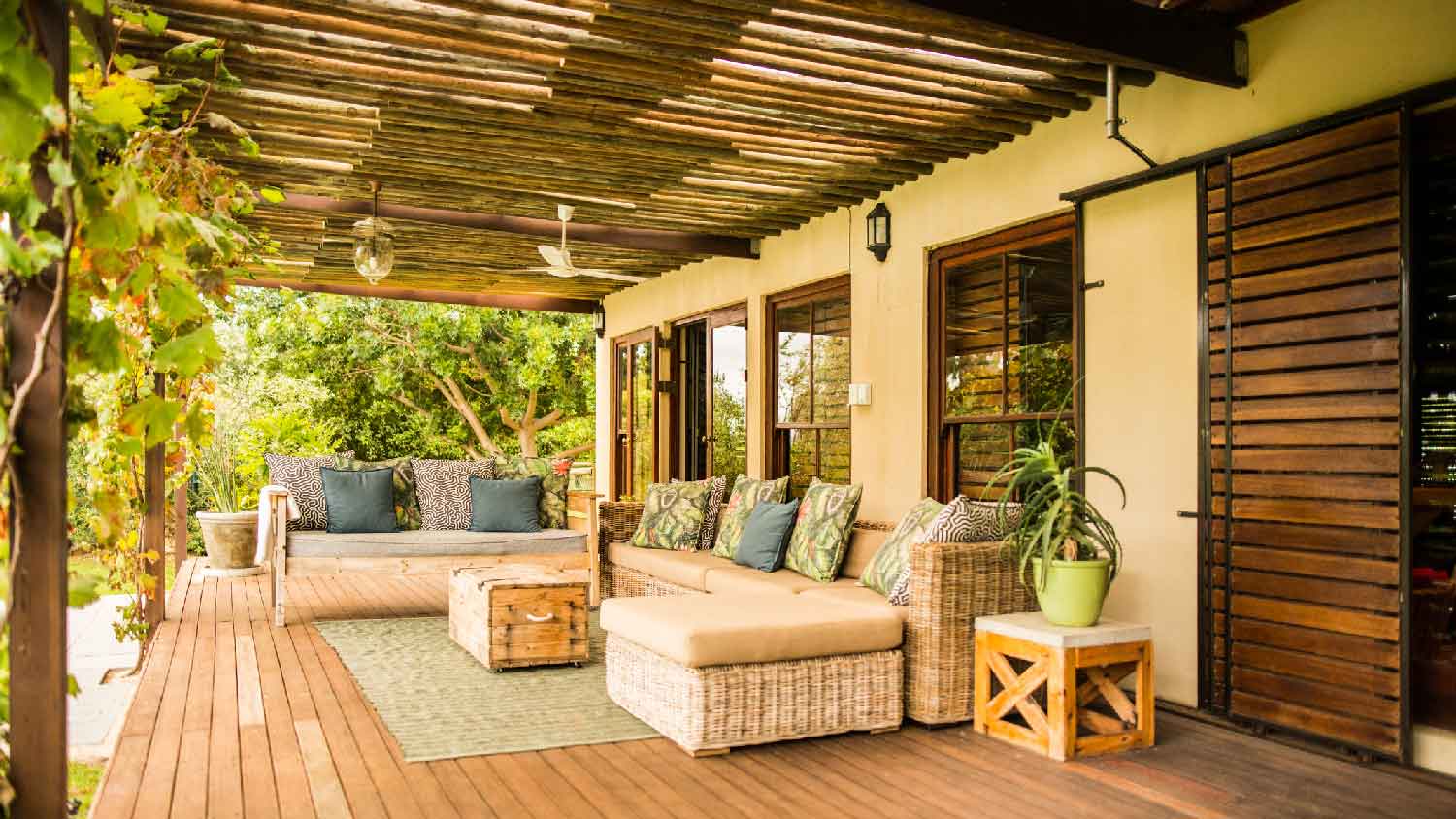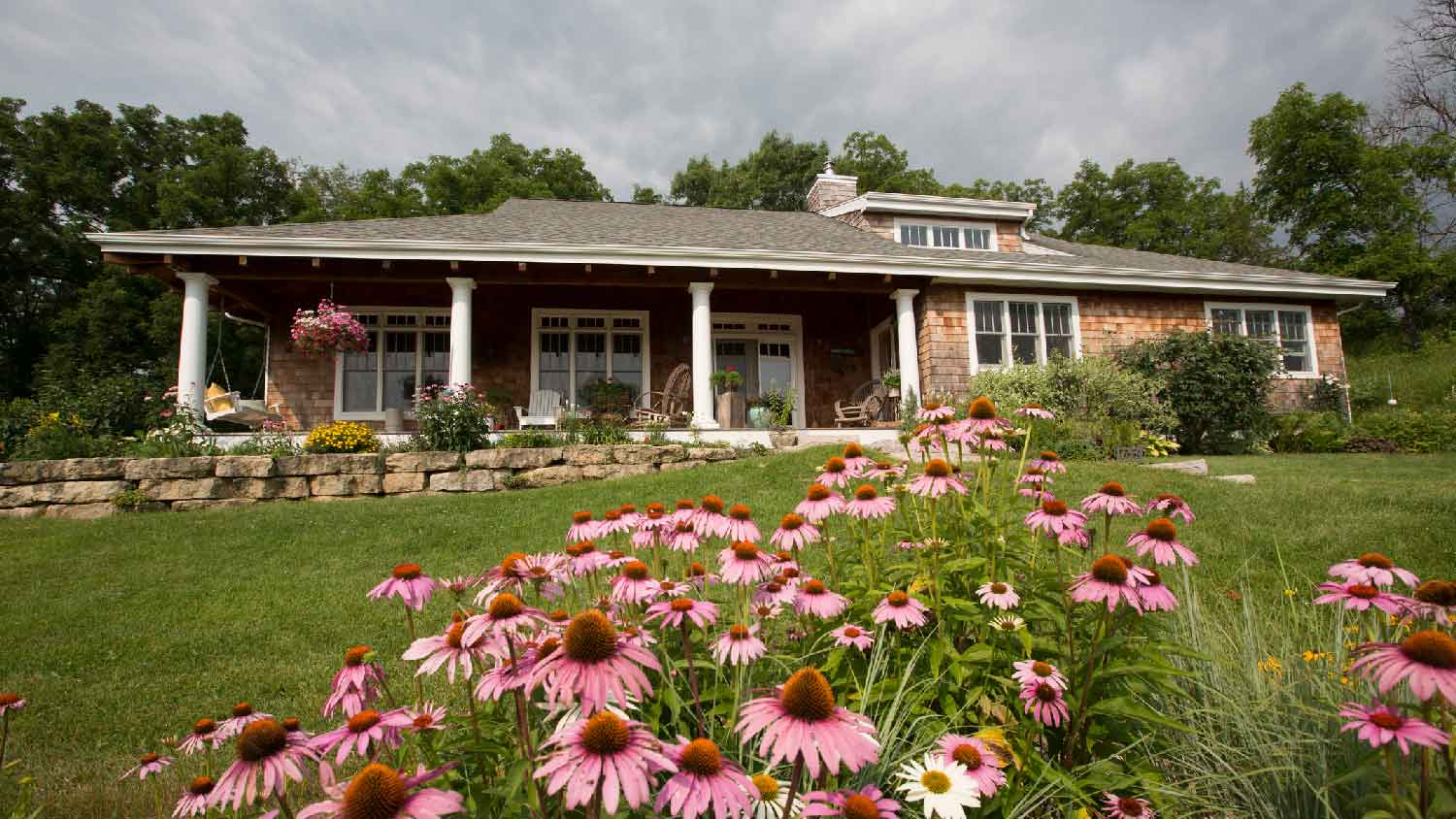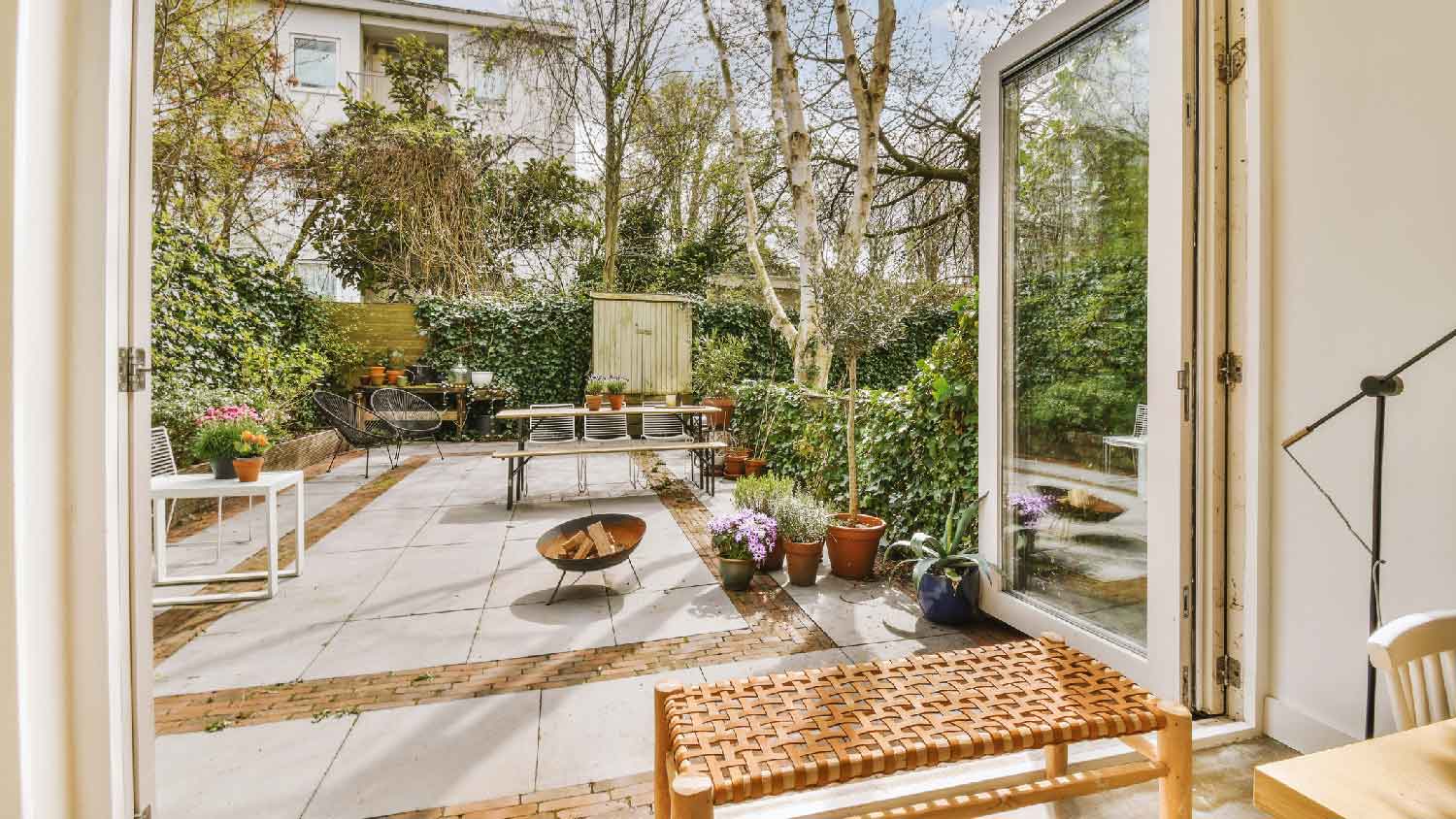
Leveling your yard can help with drainage and prevent damage to your home. Learn the cost to level a yard and what factors can affect the price.
Landscaping includes lawns and gardens, while hardscaping refers to patios and walkways


Hardscaping includes patios, walkways, decks, and driveways.
Landscaping includes garden beds, lawns, trees, shrubs, and flowers.
Both hardscaping and landscaping tend to improve your property value.
Homeowners very commonly use the terms “landscaping” and “hardscaping” interchangeably, but there are some important differences. Landscaping—also known as softscaping—generally refers to your lawn and garden beds, while hardscaping refers to driveways, patios, walkways, and decks. In this guide, we’ll break down the specific differences between hardscaping and landscaping, as well as explain the pros and cons of each.

Hardscape features include hard surfaces on your property, like paver patios, concrete walkways, driveways, and decks, while landscaping features include soft features, like the lawn and garden beds. Some people consider hardscaping features to be a part of the landscaping, but that’s technically incorrect.
Given this distinction, there are a few ways in which hardscaping and landscaping are different.
| Type of Difference | Hardscape | Landscape |
|---|---|---|
| Purpose | Functional; aesthetics | Aesthetics |
| Materials | Hard (e.g., stone) | Living (e.g., grass) |
| Pros | Flat walking surfaces | Won’t raise property taxes |
| Ideal for furniture | Easy to alter | |
| Improves curb appeal | Improves curb appeal | |
| Minimal upkeep | Suitable for DIY | |
| Cons | Can raise property taxes | Not always suitable for furniture |
| Often more expensive | Significant upkeep | |
| Usually not ideal for DIYers | May not boost home value |

Hardscaping and landscaping features look significantly different because they include different materials and functionality in a yard.
The most obvious difference between hardscaping and landscaping is the material involved. Hardscaping includes the use of hard building materials, including the following, which make up walkways, patios, decks, and driveways:
Concrete
Brick
Flagstone
Pavers
Wood
Gravel
Asphalt
In contrast, landscaping consists of living materials, including the following:
Soil
Mulch
Grass
Flowering plants
Shrubs
Trees
Many homeowners mix landscaping and hardscaping features, as in the case of retaining walls, stone borders around garden beds (called landscape curbing), and paver steps that lead through gardens or over sections of the lawn.
Hardscaping features all serve the same purposes: to provide a flat, level space to walk, sit, and keep furniture. Homeowners usually use hardscaped sections of their properties as dining areas or paths for walking, although some features may serve to separate landscaping features, as in the case of retaining walls.
While hardscaping can be aesthetically pleasing and functional, landscaping is almost always for aesthetic purposes. The only exception would be something like a vegetable garden, which also serves a functional purpose.

Hardscaping and landscaping features vary wildly in upfront and long-term cost. The property value they add is also something to consider for long-term value.
Hardscaping features are almost always more expensive upfront than landscaping because they involve expensive building materials, foundations, and, usually, professional installation. Adding a pool, paver patio, or deck could cost well over $20,000, whereas having a garden bed installed would cost much less than a quarter of the price.
The upfront cost of hardscaping is also higher because some projects, like decks and concrete patios, require permits. You can do just about any landscaping project without pulling permits.
Landscaping costs tend to be lower. While projects are time-consuming, most are DIY-able, which can help you save money on labor costs. They can get expensive if you hire a local landscaping company, but the result is usually higher quality.
Hardscaping also tends to be more expensive in the long term as well, primarily because some hardscaping features—particularly those that require foundations or involve slabs of concrete—will raise your property taxes.
With that being said, hardscaping features require far less upkeep than landscaping. You might spend a few hundred dollars or a few hours per year refinishing or power washing a deck or patio, but maintaining garden beds and a rich, green lawn takes hours every week.
In terms of monetary investment, hardscaping is usually more costly, but the time investment for landscaping is more significant.
Both hardscaping and landscaping can improve your property value and curb appeal. In most cases, buyers will see more value in hardscaping features, not only because of their more permanent nature but also because of the minimal upkeep necessary.
An exception to this might be if a concrete patio, deck, or pool has a significant and negative impact on your property taxes or homeowner’s insurance. In that case, a buyer might be less likely to find your home appealing.
Homeowners with just a little DIY experience should be able to tackle most landscaping work and even installing features, like raised garden beds. On the other hand, hardscaping features almost always require professional installation.
As mentioned previously, this has an impact on the cost of hardscaping and landscaping as well.
As you might guess, hardscaping features tend to be more permanent and durable than landscaping features, and they also require far less maintenance.
This can be both an upside and a drawback, though. While hardscaping is easier to maintain, making changes to the features is more expensive and usually requires help from a professional. Landscaping is easy to change, more affordable, and DIY-able for just about anyone willing to put in some time and effort.
From average costs to expert advice, get all the answers you need to get your job done.

Leveling your yard can help with drainage and prevent damage to your home. Learn the cost to level a yard and what factors can affect the price.

Leveling your yard can help with drainage and prevent damage to your home. Learn the cost to level a yard in Columbus, OH, and what factors can affect the price.

From your flower beds to your walkway, river rocks make a classic addition to your landscape. Learn about the cost to install river rock to set a proper budget.

What is a privet hedge and why should you consider it for your backyard? Use this guide to consider the pros and cons along with upkeep and maintenance tips.

The right landscaper can transform your property. Learn how to hire a landscaper who will be the best fit for your landscaping project.

It isn’t immediately obvious who to hire when you need to regrade your yard. Here are the contractors perfect for this critical home project.